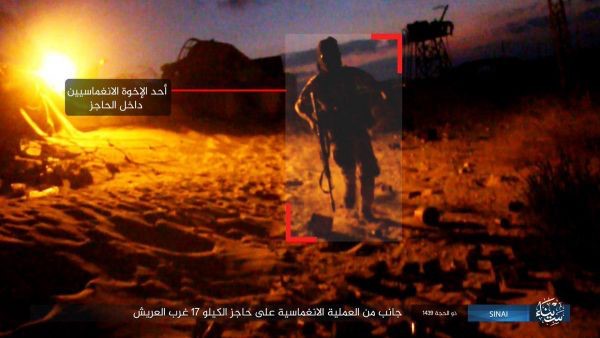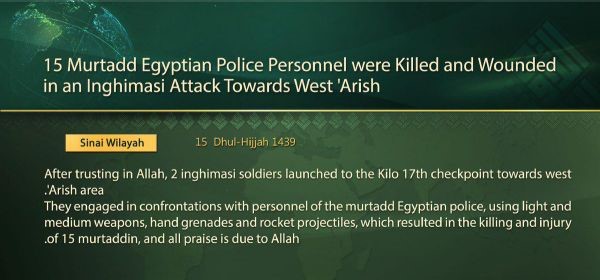
The information, data and findings from the below brief was collected by and sourced from TRAC: Terrorism Research & Analysis Consortium, in partnership with the Mackenzie Institute. Please click here to visit TRAC.
Islamic State (IS) Knife Attack in Melbourne, Three al-Shabaab VBIEDs Target Criminal Investigation Department Headquarters in Mogadishu
Islamic State (IS) Knife Attack at the Intersection of Bourke & Swanston Streets in Melbourne, Australia (9 November, 2018)
On 9 November 2018, a truck packed with gasoline cylinders was set alight and created an explosion. The subsequent fire drew emergency responders to the scene at the intersection of Bourke & Swanston Streets in Melbourne’s city centre. Upon their arrival, the attacker draw a knife and hurriedly moved towards police forces. Eyewitnesses claimed that the attacker was yelling ‘Allahu akbar’ during the knife attack. One person was killed and another two injured. The attacker was wounded and taken to hospital with most recent information indicating that he died in the hospital.
The attacker is believed to be 30-year-old Hassan Khalif Shire Ali (a Somali-born Australian), whose brother was accused of plotting a mass murder on New Year’s Eve at Federation Square in 2017. Hassan was known to the Australian Security Intelligence Organisation (ASIO), and his passport was cancelled since he was added to a list as one of 300 potential terrorists in Australia.
In 2014, Hassan Khalif Shire Ali was in contact with an Australian IS foreign fighter, Khaled Sharrouf. Sharrouf traveled to Syria on his brother’s passport immediately after being released from prison, where he served five years for his role in a 2005 plot in Sydney, dubbed “Operation Pendennis”. Sharrouf is also known for a July 2014 Facebook post: a photo of his young son holding a severed head. Ali was also discovered to be friends with Yacqub Khayre, the assailant of the IS-claimed May 2017 murder & siege in Brighton, Melbourne.
Ali’s wife, whose name has not been released, has been detained by police and is reportedly not cooperating. Neighbours reported that three days before the attack, Ali and his wife were seen arguing outside their home. Early reports indicate that Ali’s wife and possibly her parents as well have also been radicalized. On the afternoon of the attack, Ali’s wife and son were taken by her parents into hiding.
Although on the surface this plot to draw police forces into the attack with a car bomb seems well-planned, based on the video footage available it would seem as though the assailant was ill-prepared for police forces upon arrival. The assailant drove a vehicle laden with gas canisters into the city centre, possibly with the intention of making them explode violently. It is worth noting that there have been at least two other high-profile IS attacks that involved gas canisters that did not explode as intended.
The topic of inspiring knife attacks is constantly broached in IS propaganda and Australia is featured prominently in Islamic State (IS) propaganda posters. On 29 September 2018, as part of the series, “Harvest Time has Come to Your Homes,” knife attacks were called for. Recent posters have expanded the threat, transitioning from vehicle and knife attacks to calling on supporters to poison Australia’s food supply network. Within an hour of this attack, a celebratory poster was created, “WE STRIKE WHENEVER WE WANT, WHEREVER WE WANT, HOWEVER WE WANT,” as can be seen in the poster below.


Photos of the confrontation with police:






Three al Shabaab VBIEDs Target Criminal Investigation Department (CID) Headquarters in Mogadishu, Somalia (9 November, 2018)
On 9 November 2018, there were three bombings in the KM4 area in Mogadishu, Somalia. They occurred outside three main buildings: Hotel Hayaat, Sahafi Hotel and the Somalia’s Criminal Investigation Department (CID) HQ. Three vehicles loaded with explosives were stationed within a radius of about 50 meters.
A journalist at the scene reported that at least 39 people were killed and 40 injured. References are also made to failed attempts by al Shabaab fighters to enter Hotel Sahafi, who were shot by security forces. Somali security forces stationed at the CID and guards at Sahafi Hotel prevented the attackers from entering the Sahafi Hotel. According to these reports, all the attackers were shot and killed within minutes of the attempted attack.
Irrespective of heightened security measures at hotels in Mogadishu, al Shabaab attackers are generally aided by sympathizers employed at hotels. This allows al Shabaab to gain access to information on who is present at these hotels as well as what security measures are in place. Combined with al Shabaab’s ability to execute sophisticated attacks, hotels will remain vulnerable so long as they are continually aided by these sympathizers. According to an official Somali dossier report on the attacks, reference is made to security gaps such as the lack of bomb-detecting scanners and sniffer dogs at entry checkpoints around Mogadishu.
The sustained al Shabaab attacks in Somalia not only show the continued presence and ability of al Shabaab to execute attacks but also that the government is struggling to gain effective control and support. Measures such as the banning of trucks during specific times and heightened security measures in Mogadishu pale are tantamount to insignificant without the cooperation of residents. Accusations of collaboration within the ranks of security and intelligence officers in the government is clear evidence of the continued struggle to gain effective institutional stability, a vital pre-requisite to countering al Shabaab efforts.





Consider registering for a TRAC membership to receive full access to all original content.
The above has been compiled by Alexander Sawicki, an Undergraduate Teaching Assistant for the Department of History at Ryerson University, specializing in the interplay between technological innovation, warfare, and social change throughout history. He was formerly a Research Analyst for the NATO Association of Canada (NAOC), where he published articles that dealt with Cybersecurity, US-Russia relations, and Canadian Military Procurement. You can find Alexander on LinkedIn.








